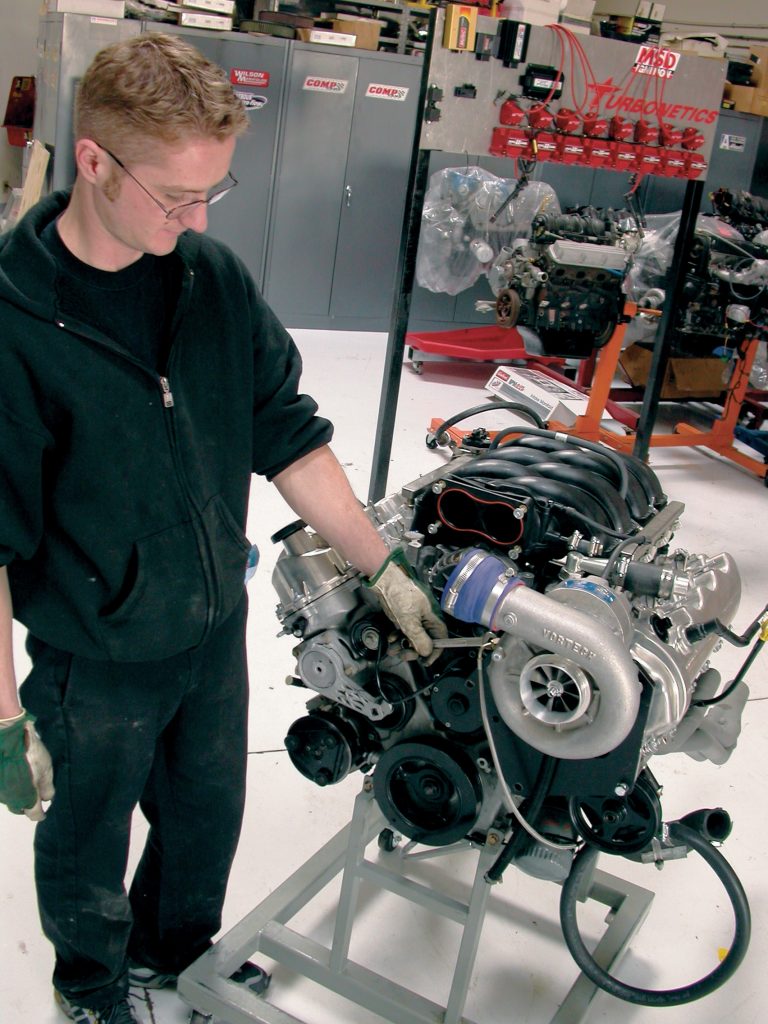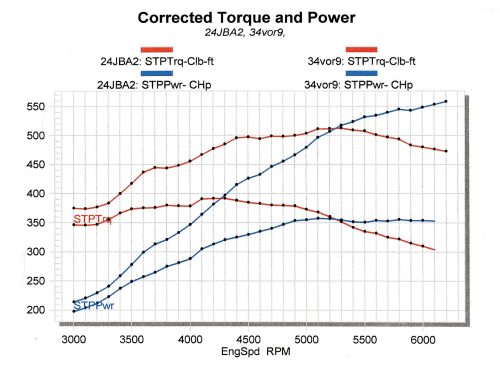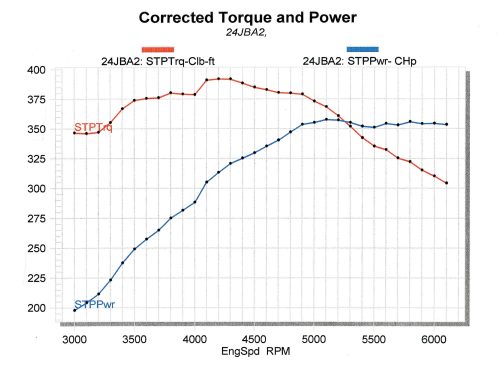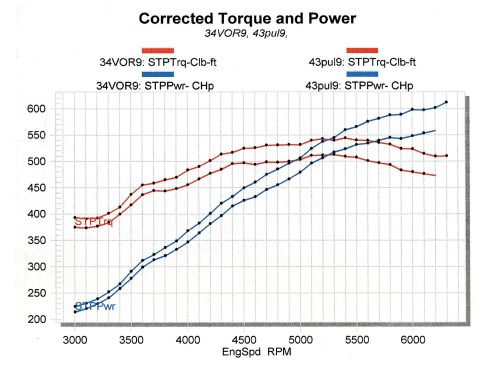
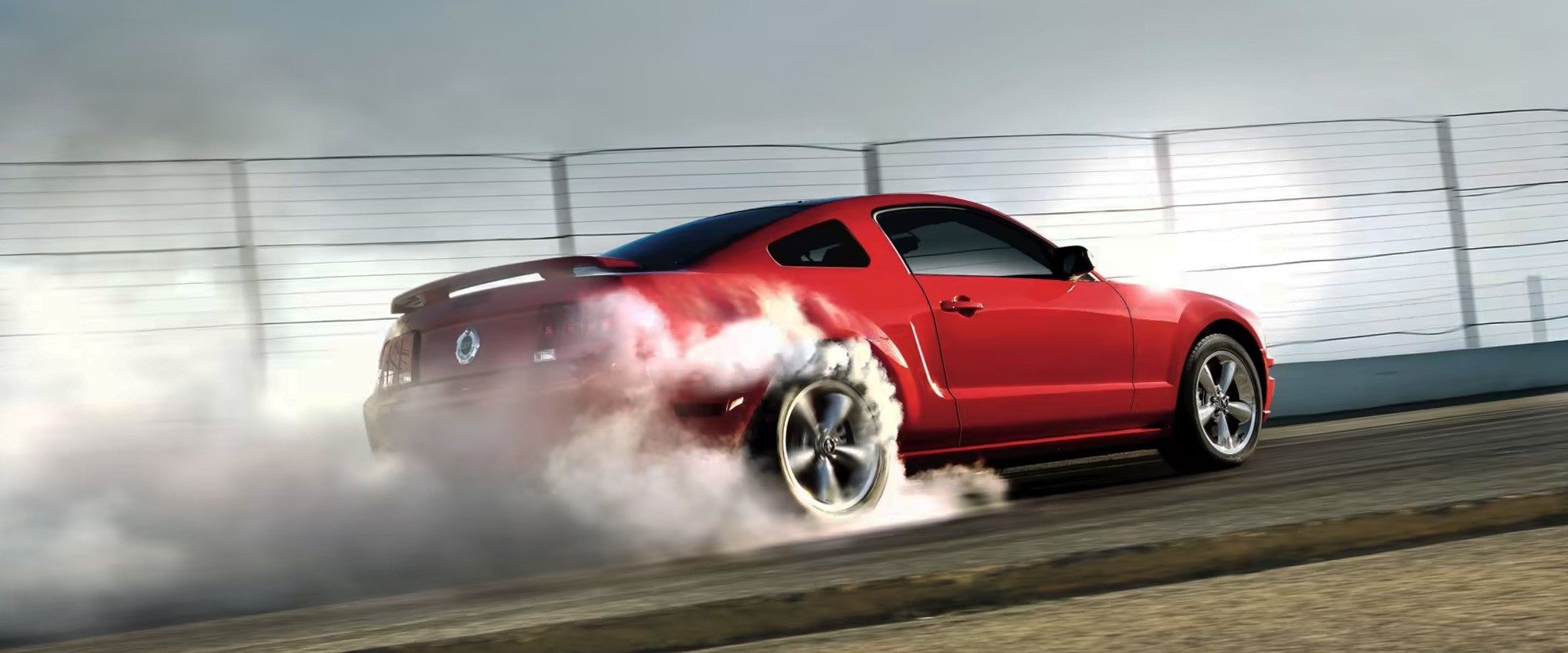

THE AUTO BUILDER
Featured

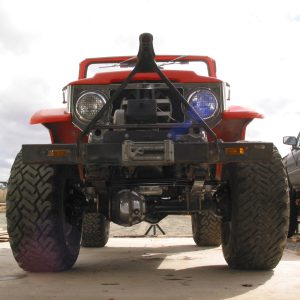
Beyond the Lift: Navigating New Heights with Upgraded Steering

24 PERFECT PARTS AND TIPS
- All Post
- 20 High Priority - SR Super Rod
- Builds
- 25 High Priority - FB Ford Builder
- Cars
- 30 High Priority - AR American Rodder
- 01 Post Status
- 35 High Priority - RD Rodders Digest
- 40 High Priority - OTR On the Road
- 45 High Priority - SRB Street Rod Builder
- 50 High Priority - TB Truck Builder
- 55 High Priority - BSCENE Buckaroo Scene
- 60 High Priority - FPB Family Power Boat
- Trucks
- Swaps
- Performance Boats
- _000 Home Sliders
- Builders
- 00 Sidebars
- Manufacturers
- 05 High Priority - HCI Hot Compact Imports
- 05 Publications
- 10 High Priority - CR Chevy Rumble
- Back
- Chassis
- Engine
- Fuel System
- Electrical
- Exhaust
- Transmission / Drivetrain
- Suspension
- Steering
- Brakes
- Wheels and Tires
- Interior
- Exterior
- Accessories
- Power Adders
- Back
- Chassis
- Engine
- Fuel System
- Electrical
- Exhaust
- Transmission / Drivetrain
- Suspension
- Steering
- Brakes
- Wheels and Tires
- Interior
- Exterior
- Accessories
- Power Adders
- Back
- Chassis
- Engine
- Electrical
- Exhaust
- Fuel System
- Transmission / Drivetrain
- Suspension
- Steering
- Brakes
- Wheels and Tires
- Interior
- Exterior
- Accessories
- Power Adders
- Back
- Chassis
- Engine
- Electrical
- Exhaust
- Fuel System
- Transmission / Drivetrain
- Suspension
- Steering
- Brakes
- Wheels and Tires
- Interior
- Exterior
- Accessories
- Power Adders
- Back
- Chassis
- Engine
- Fuel System
- Electrical
- Exhaust
- Transmission / Drivetrain
- Suspension
- Steering
- Brakes
- Wheels and Tires
- Interior
- Exterior
- Accessories
- Power Adders
- Back
- Chassis
- Engine
- Fuel System
- Electrical
- Exhaust
- Transmission / Drivetrain
- Suspension
- Steering
- Brakes
- Wheels and Tires
- Interior
- Exterior
- Accessories
- Power Adders
- Back
- Chassis
- Engine
- Fuel System
- Electrical
- Exhaust
- Transmission / Drivetrain
- Suspension
- Steering
- Brakes
- Wheels and Tires
- Interior
- Exterior
- Accessories
- Power Adders
- Back
- Engine
- Fuel System
- Electrical
- Outdrives
- Steering
- Interior
- Accessories
- Power Adders
- Exterior and Hull
- Back
- Chassis
- Engine
- Electrical
- Exhaust
- Fuel System
- Transmission / Drivetrain
- Suspension
- Steering
- Brakes
- Wheels and Tires
- Interior
- Exterior
- Accessories
- Power Adders
- Back
- Chevrolet
- Cadillac
- Pontiac
- AMC
- Buick
- Jeep
- Lincoln
- Ford
- Honda
- GMC
- BMW
- Mitsubishi
- Dodge
- Nissan
- Chrysler
- Subaru
- Toyota
- Plymouth
- Mercury
- Volvo
- Volkswagen
- Oldsmobile
- Acura
- Back
- 05 Pub HCI Hot Compact Imports
- 15 Pub 4x4 4x4 Builder
- 20 Pub SR Super Rod
- 25 Pub FB Ford Builder
- 30 Pub AR American Rodder
- 35 Pub RD Rodders Digest
- 40 Pub OTR On the Road
- 55 Pub BSCENE Buckaroo Scene
- 10 Pub CR Chevy Rumble
- 50 Pub TB Truck Builder
- 60 Pub FPB Family Power Boat
- 45 Pub SRB Street Rod Builder
- Back
- Chip Foose
- Ring Brothers
- Jack Fuller
- Bob Cullipher
- Jerry Nichols
- Bobby Alloway
- Jesse James
- Carl Casper
- J.F. Launier
- Steve Sellers
- Boyd Coddington
- Rad Rides by Troy
- Cal Auto Creations
- George Barris
- West Coast Customs
- Back
- Street Rods
- Hot Rods
- Late Model
- Drag Race
- Handling
- Compact Cars
- Chassis
- Engine
- Fuel System
- Electrical
- Exhaust
- Transmission / Drivetrain
- Suspension
- Steering
- Brakes
- Wheels and Tires
- Interior
- Exterior
- Accessories
- Power Adders
- Chassis
- Engine
- Fuel System
- Electrical
- Exhaust
- Transmission / Drivetrain
- Suspension
- Steering
- Brakes
- Wheels and Tires
- Interior
- Exterior
- Accessories
- Power Adders
- Chassis
- Engine
- Electrical
- Exhaust
- Fuel System
- Transmission / Drivetrain
- Suspension
- Steering
- Brakes
- Wheels and Tires
- Interior
- Exterior
- Accessories
- Power Adders
- Chassis
- Engine
- Electrical
- Exhaust
- Fuel System
- Transmission / Drivetrain
- Suspension
- Steering
- Brakes
- Wheels and Tires
- Interior
- Exterior
- Accessories
- Power Adders
- Chassis
- Engine
- Electrical
- Exhaust
- Fuel System
- Transmission / Drivetrain
- Suspension
- Steering
- Brakes
- Wheels and Tires
- Interior
- Exterior
- Accessories
- Power Adders
- Chassis
- Engine
- Fuel System
- Electrical
- Exhaust
- Transmission / Drivetrain
- Suspension
- Steering
- Brakes
- Wheels and Tires
- Interior
- Exterior
- Accessories
- Power Adders
- Back
- 05 Post Imported
- 20 Post Missing Images (All)
- 25 Post Missing Images (Partial)
- 15 Post In Progress
- 30 Post Internal Review
- 40 Post On Hold
- 50 Post Approved
- 10 Post Images Imported
- 17 Post Missing TXT Files
- 18 Post Missing PDF Files
- 27 Post Missing Content
- Back
- Chassis
- Engine Swaps
- Interior Swaps
- Driveline
- Back
- Street Trucks
- OffRoad Trucks
- Chassis
- Engine
- Fuel System
- Electrical
- Exhaust
- Transmission / Drivetrain
- Suspension
- Steering
- Brakes
- Wheels and Tires
- Interior
- Exterior
- Accessories
- Power Adders
- Chassis
- Engine
- Fuel System
- Electrical
- Exhaust
- Transmission / Drivetrain
- Suspension
- Steering
- Brakes
- Wheels and Tires
- Interior
- Exterior
- Accessories
- Power Adders
- Back
- 01 Sidebar Left
- 01 Sidebar Right
Spotlighter
POPULAR READS
GT Transformation
Vortech-Supercharged Cobra Killer
Author

Richard Holdener
Story & Photography
Retro-Fresh Exterior Design
Judged solely on its retro-fresh exterior, the ’05 Mustang is a huge success, but the enormity of the transformation from simple pony car to a “must-have GT” only becomes clear when you look past the sexy sheetmetal. The retro styling is cool beyond compare. Spot an S197 Mustang on the street and just watch heads turn. The same can’t be said for any other Mustang (short of some fully restored classic Shelbys), but the S197 ’Stang certainly causes a commotion. The lines are clean, the shape familiar, and the presentation first rate.
The Allure of the S197 Mustang GT
The ’05 Mustang GT was destined to be a hit, even if Ford had decided to carry over the existing powerplants. To our good fortune, the powers that be decided that the fresh new look deserved something more than a 260hp carryover.
Upgraded Powerplant: Three-Valve 4.6-Liter V8
In place of the old 4.6-liter two-valve Power-Improved modular motor, Ford inserted a revised three-valve version packing a new set of cylinder heads, a revised intake and throttle body, and even variable cam timing to further enhance the already improved power curve.
Evolution of the Three-Valve Engine
While it can be argued that the new three-valve engine is merely an evolution of the older 4.6-liter two-valve, the changes to the new engine represented huge steps in the right direction. Although the new mod motor shares the basic short block, the top end is all new.
Key Design Changes: Headgear and Valve Configuration
As is evident by the new three-valve designation, the major design change on the ’05 mod motor is the headgear. The much-needed airflow improvements come courtesy of an additional intake valve combined with redesigned intake and exhaust ports.
Enhanced Airflow: Intake Manifold and Throttle Body
The airflow improvements were carried over to the intake manifold, as the three-valve engine has been blessed with a new composite intake manifold that offers slightly shorter runners, improved (radiused) port entries, and a repositioned throttle body. The new throttle body also features electronic drive-by-wire actuation.
Variable Cam Timing: Optimizing Power Across RPM Range
Additional electronic trickery includes variable cam timing by which the cams are advanced and retarded to optimize the power curve at high and low rpm. Traditionally, advancing the cam improves low-speed torque production, while retarding the cam events improves top-end horsepower. Using the new variable cam timing, the three-valve engine offers the best of both worlds.
Testing the Stock Three-Valve Engine
As good as the new three-valve engine is in stock trim, we were here to see how much we could improve it with the installation of a new Vortech supercharger. The first step was to run the engine in stock trim, or at least in near-stock trim.
Engine Preparation and Modifications
The ’03 GT engine was supplied by our friends at Vortech, without whose help this test would never have happened. A few changes were necessary before running the new three-valve GT engine on the engine dyno. First, the drive-by-wire had to be replaced with a mechanical throttle system. Next, we installed a Meziere electric water pump to replace running all the accessories.
Ignition and Exhaust System Upgrades
We then replaced the factory coil-on-plug ignition system with a coil pack from a ’98 two-valve GT engine. The change in ignition had no effect on performance other than allowing us to utilize the FAST management system. We then installed a set of JBA long-tube headers in place of the stock cast-iron exhaust manifolds. The JBA long-tubes were worth as much as 18 lb-ft all by themselves, but we wanted to ensure that the ’05 three-valve engine had plenty of exhaust flow once we installed the Vortech.
Performance Results
Breathing through the stock throttle body and exhaling through the JBA headers, the ’05 4.6-liter three-valve GT engine pumped out 356 hp at 5,800 rpm and 392 lb-ft of torque at 4,300 rpm. The torquey mod motor exceeded 350 lb-ft from 3,300 rpm all the way to 5,300 rpm.
Installing the Vortech S-trim Supercharger Kit
After running the three-valve engine in normally aspirated trim, it was time to install the Vortech S-trim supercharger kit. Installation of the Vortech required replacing the electric water pump with the stock (belt-driven) unit. It was necessary to utilize all of the factory accessories to successfully drive the supercharger using the supplied drive belt.
Vortech Kit Installation Details
Like previous systems, the remainder of the factory accessories shared the six-rib serpentine drive belt used for the blower, greatly improving packaging. The Vortech S-trim supercharger was mounted to the driver’s-side front cover using a dedicated mounting plate and a series of stand-offs. Also included in the Vortech kit was a short discharge tube. This standard kit did not include one of the Vortech air-to-water aftercoolers, although we will be testing that system in the near future.
Boost and Drive Ratio
Of course, the lack of intercooling did not stop us from upping the boost pressure with a pulley change (read on). The Vortech kit was supplied with a 3.60-inch blower pulley, and when combined with the factory 6.5-inch crank pulley, it produced a drive ratio of 1.805:1. The drive ratio combined with the internal step ratio in the blower determined the impeller speed (and attending boost level) at the various engine speeds.
Success with Vortech Products
Having had nothing but success with Vortech products in the past, we had high hopes for the new ’05 three-valve GT kit. When applied to the new three-valve mod motor, the S-trim once again proved why there is nothing like forced induction when it comes to adding power.
Power Gains with Vortech S-trim
Did the Vortech add power? How does an extra 200 hp sound? Equipped with the Vortech S-trim, the 4.6-liter three-valve pumped out 559 hp at 6,200 rpm at a maximum boost pressure of 11 psi. As expected of the blown motor, the torque production skyrocketed as well, up from 392 lb-ft at 4,300 rpm to 513 lb-ft at 5,300 rpm.
Performance Metrics
Given that the airflow and boost pressure increase with engine speed, the power gains followed suit. The blower added 30 lb-ft at 3,000 rpm but upped the power ante by an amazing 200 hp at 6,000 rpm. With the addition of the JBA headers and Vortech supercharger, the three-valve GT was now pumping out supercharged four-valve Cobra power. Actually, scratch that last comment, as the supercharged GT was now making “modified” ’03 four-valve Cobra power. The new three-valve configuration seems to take to supercharging every bit as well as the four-valve engines—a compliment indeed.
Power Gains and Tuning Necessities
Naturally, we were elated with the power gains offered by the Vortech supercharger, but it must be said that the additional airflow supplied by the blower would be useless without proper tuning. We relied on the FAST management system to tailor the air/fuel to a pump-gas-safe 11.75:1. We also retarded the total timing from 30 degrees (in normally aspirated trim) to 22 degrees. Look for Vortech to supply the necessary tuning components to produce similar results on the street. It was this absolute control over the fuel and timing that allowed us to safely take the next step in performance.
Increasing Boost and Power
With a tad more fuel available from our 36-lb injectors, we decided to replace the 3.60-inch blower pulley with a smaller 3.33-inch version. The increase in blower speed increased the boost pressure by a maximum of 2 psi (from 11 psi to 13 psi) and power right along with it. As a hedge against damaging someone else’s engine, we spiked the pump gas with 2 gallons of 100-octane before letting the hammer fly with the smaller pulley. The jump in boost pressure upped the power output from 559 hp to a whopping 613 hp. The peak torque was up as well, from 513 lb-ft to 545 lb-ft.
Conclusion
At this point we figured it was time to call it quits. Sure, it was no Halle Berry, but we succeeded in officially transforming the 4.6-liter three-valve GT into one serious Cobra killer.
Stock 4.6-Liter Three-Valve GT Engine With JBA Long-Tube Headers
To say that the stock three-valve GT engine was a significant improvement over the 4.6-liter two-valve PI motor it replaced would be an understatement. Equipped with the JBA long-tube headers, the three-valve engine produced 356 hp at 5,800 rpm and 392 lb-ft at 4,300 rpm. We are pretty certain that these numbers can be improved once we have full control over the variable cam timing, but the power output was impressive nonetheless. Enthusiasts may wonder why this 4.6-liter three-valve engine produced 356 hp when it is rated by Ford to produce only 300 hp. The difference between the factory rating and our 356hp peak number can be attributed to the test method. We ran the normally aspirated engine without any accessories, exhaust or induction system. We also optimized the timing and spark tables for maximum power. The factory rating of 300 hp is with a full induction system, full exhaust and running all the accessories (with the conservative factory fuel and timing maps).
4.6-Liter Three-Valve—NA vs. Vortech S-Trim (11 psi Max)
Not only did Vortech supply the complete supercharger kit for the ’05 three-valve GT engine, it also supplied the complete three-valve GT engine for testing. Arguably the best production motor ever installed in a Mustang GT, the 4.6-liter three-valve obviously has plenty to offer in supercharged form as well. Equipped with the Vortech S-Trim supercharger kit, this 4.6-liter three-valve GT engine easily out-powered the mighty ’03 four-valve Cobra. What self-respecting GT owner wouldn’t love to wipe the smirk off the face of a supercharged Cobra owner? In fact, it takes a pretty modified ’03 four-valve engine to produce 559 hp (under the same test conditions). Naturally, the Eaton supercharged engine will offer more low-speed power, but for maximum acceleration in the 4,000 to 6,000 rpm range, the supercharged three-valve GT should be able run every bit as fast as an ’03 Cobra.
Supercharged 4.6-Liter Three-Valve—3.60 vs. 3.33 Blower Pulley (11 psi vs. 13 psi)
Even before Vortech was finished offering the 4.6-liter three-valve GT engine and complete supercharger system for testing, we were already thinking ahead about the availability of different blower pulley sizes. Boost is very addictive—if a little is good, then more must be better, right? Actually, the ability to increase the boost pressure came more from our ability to precisely control the air/fuel and (more important) the timing curve using the FAST management system. Running a blower on the dyno at just one boost level is almost sacrilegious. Besides, we owed it to the readers to find out if the new three-valve engine responded well to increased boost pressure. We suspect that some enthusiasts may try upping the boost pressure once they receive their kits, so we decided to test the waters for them. The test involved swapping out the 3.60-inch blower pulley for a smaller 3.33-inch version. This increase in blower speed (relative to engine speed) resulted in a jump in boost pressure of roughly 2 psi (at 6,200 rpm). The jump in blower speed upped the peak power from 559 hp to 613 hp. The peak torque increased from 513 lb-ft at 5,300 rpm to 545 lb-ft at 5,400 rpm. As expected, the pulley change increased the power output everywhere, with the gains increasing with engine speed.
ARTICLE SOURCES
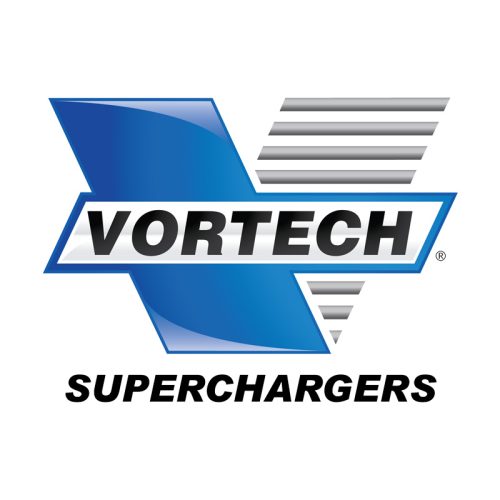
Vortech Superchargers
1650 Pacific Avenue
Oxnard, CA 93033
(805) 247-0226
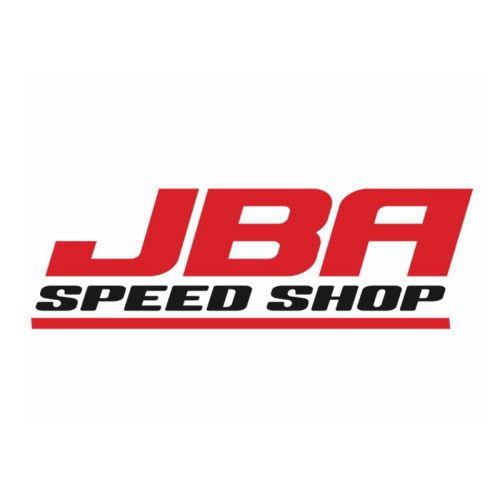
Madison Manufacturing
5675 Kearny Villa Road
San Diego, CA 92123
(858) 495-3395












